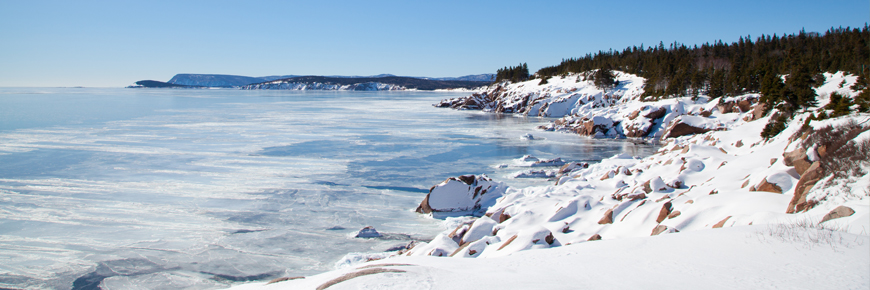
The climate of northern Cape Breton
Cape Breton Highlands National Park
The Maritime Boreal climate of northern Cape Breton is characterized by its warm summers, cold winters and moderate precipitation. The main factors influencing the climate are global air pressure systems, prevailing continental winds, and its latitude (46 degrees north of the equator). Other factors, such as the coastal location and mountainous terrain, act to modify the climate.
Northern Cape Breton is sandwiched between the Gulf of St. Lawrence and the Atlantic Ocean. The influence of these two bodies of water is one of the greatest modifying factors of the northern Cape Breton climate. Rapid changes in the weather, winter thaws, fog and high snowfall (300 - 400 centimetres/year!) are some of the effects of the marine location. Tropical marine storms often occur in the fall, bringing torrential rains.
Another cause of local differences in climate is the altitude of the highland plateau. In fact, the plateau, averaging 400 metres above sea level, is considered a distinct climatic region in Nova Scotia. It has a shorter growing season, greater daily temperature extremes, and more precipitation than the nearby lowlands. Pockets of snow often linger in the highlands until June.
Prevailing winds are from the west for most of the year except for 4 to 6 weeks in the spring, when they come from the east. Wind is a significant factor on the plateau and also on the west coast where winds from the southeast - locally called "les suetes" - occasionally reach hurricane force, gusting up to 200 kilometres per hour. High southeast winds gain speed over the open plateau and tumble down onto the western coast in turbulent gusts, buffeting local communities.
As global climate change continues to alter world weather systems, more weather extremes can be expected in northern Cape Breton, including more frequent droughts and storms.
Related links
- Date modified :